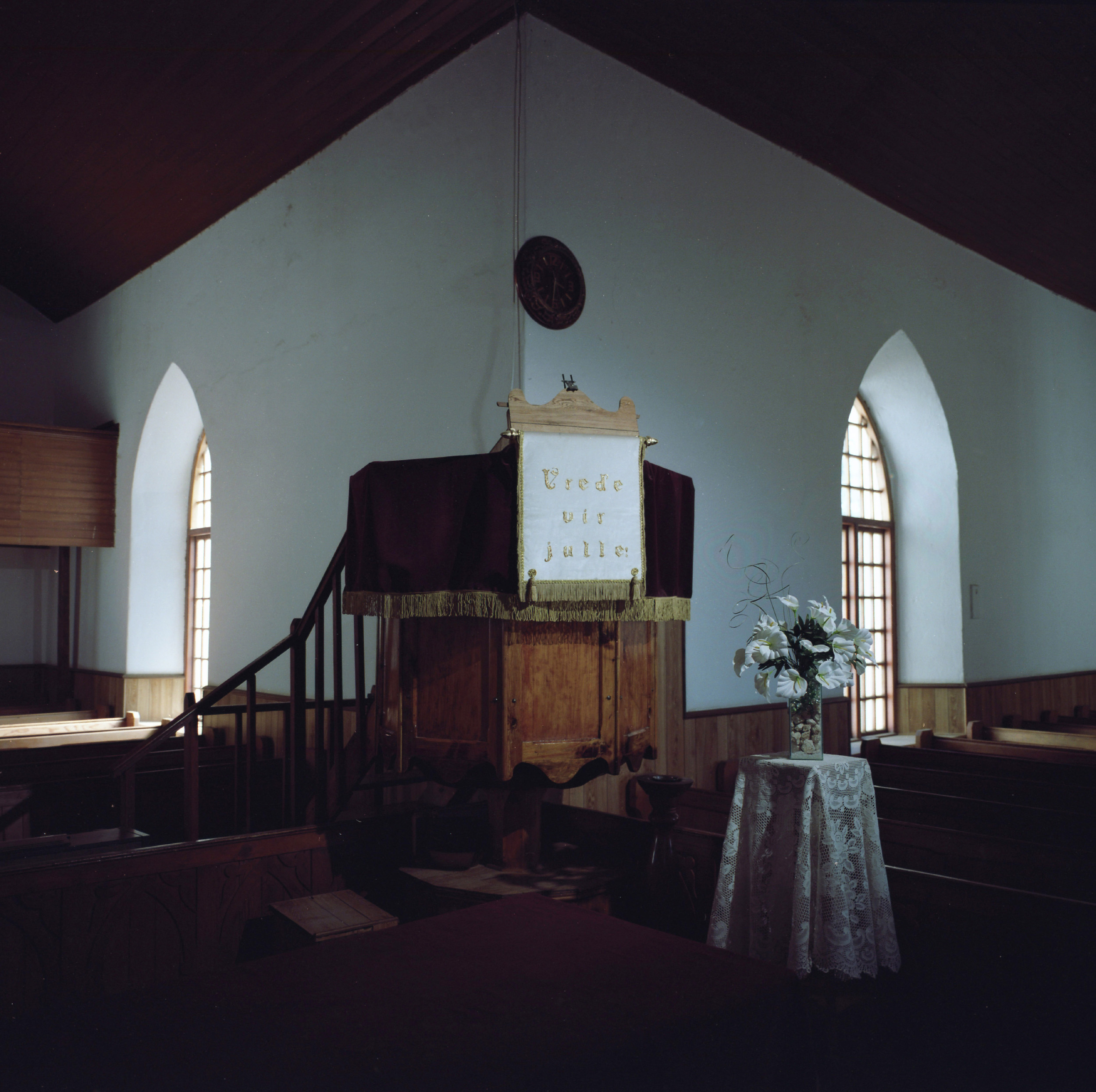' With SKA ("Square Kilometre Array" project) they will look much deeper into space, if possible, perhaps 20.7 billion light-years into space which brings us to presumably the origins of the universe itself...'
Dr. Isak Potgieter, Pastor










' With SKA ("Square Kilometre Array" project) they will look much deeper into space, if possible, perhaps 20.7 billion light-years into space which brings us to presumably the origins of the universe itself...'
Dr. Isak Potgieter, Pastor

' With SKA ("Square Kilometre Array" project) they will look much deeper into space, if possible, perhaps 20.7 billion light-years into space which brings us to presumably the origins of the universe itself...'
Dr. Isak Potgieter, Pastor

The lights are left on through the night at this new petrol station building site - mainly for safety. The manager of the building project, who also slept on site, was eager to show visitors around - clearly dedicated to building a place that everyone can be proud of. He also explained that the station will be named after the owner's daughter, who, as she grew up, really took a liking to the energy of the people working at stations of this kind.
Read More
'Only in the morning, when the daylight crossed over the highland rocks and fynbos, they saw how strange and otherworldly the hemelblom was. The seeds that fell the previous afternoon shot up incredibly fast, each on a lump of roots that didn't enter the ground, but just gripped the ground from above. In one single night each plant became fully grown and was spreading seeds so that new plants would shoot up. In one night the hemelblomme multiplied a hundredfold. For now it was just strange. Only later it would become frightening.'
From Die Hemelblom (The Heaven Flower) by Jan Rabie, 2nd edition 1974, Tafelberg, first published 1971. Translated from the original Afrikaans by Nic Grobler.
Photographed inspired by Die Hemelblom, Jan Rabie. The Hemelblom was sent to the earth by a concerned galactic council to ensure the survival of life on earth in the face of a new world war. The plant was specifically grown to remove the poisonous elements introduced by humans - feeding on pollution it would rapidly cover the earth and wipe out most of humankind but leave a new earth covered with fresh fertile soil.

‘Knersvlakte’, literally translated from Afrikaans means “gnashing plain”. The name is said to originate from the crunching sound made by contact with the white, quartz-rich gravel. The quartz also reflects the sunlight, which makes the rocks and soil cooler in temperature than surrounding areas. This unique condition has allowed a large number of endemic plants to proliferate - many of these are small succulents that can absorb heat during the long and dry summers.
Read More
'To whom shall I dedicate this book? It is about a being who is not human, who is higher than man - an unattainable superior.
I think I will go to the opposite - and then I will not have to look very far. I lost a friend a long time ago - a friend that I loved and who loved me. I will never see him again forever; but forever I will never forget him. Now, after all these years, there is not a day that passes without his image coming before me and I'm grieving about him. To him I was the higher being - a Loeloeraai of a higher existence. To me he was the ultimate perfection I found on earth, of love and faithfulness and virtue. And I lost him, and I miss him dearly. . .
I dedicate this work:
To the memory of
MY FRIEND AND DOG, JAKHALS’
From the dedication of Loeloeraai, CJ Langenhoven, 4th Edition 1929, First published 1923. Translated from original Afrikaans by Nic Grobler.
Photograph inspired by Loeloeraai, CJ Langenhoven. Loeloeraai is a visitor from Venus, who spends about two weeks with a family in Oudtshoorn. They end up going on a small trip to the moon before Loeloeraai returns to Venus.
Read More

These rocks contain a high percentage of iron and their dark appearance forms a truly ancient landscape. The rocks make a metal sound when played; they are referred to with different names such as ‘rock gongs’, ‘ringing rocks’ or even ‘bushman pianos’. Found in various areas around the world and Africa, tradition formed around communicating with the help of the rocks - evident by the ancient drumming marks often found on them.
Read More

'...the Sun has now remained on the horizon for two hours and is not rising.'
Photograph inspired by ‘Swart ster oor die Karoo’ (Black star over the Karoo) by Jan Rabie, 1957. Chaos ensued around the world as the Earth was brought to a standstill.

“For me, my identity is basically the person I’m accepting myself to be and who I believe I am. I don’t think I would identify myself as Xhosa or Tswana, I don’t think I would identify myself as coloured either. My father is coloured and everything in my genes I believe is more connected to an African lifestyle - which includes the Xhosa and Tswana. But currently, I’m the person I believe I am - that is my culture.”
Liezel is employed from twelve years in the museum of the living landscape project, that conceived around the idea of the Cederberg landscape as a time machine, that visitors can ‘travel’ through using the wealth of archaeological material continually discovered on site: structural remains, plants, animals etc.. the legacy of the San, the old Inhabitants of the area. The project looks at the astrological mythology of San people.